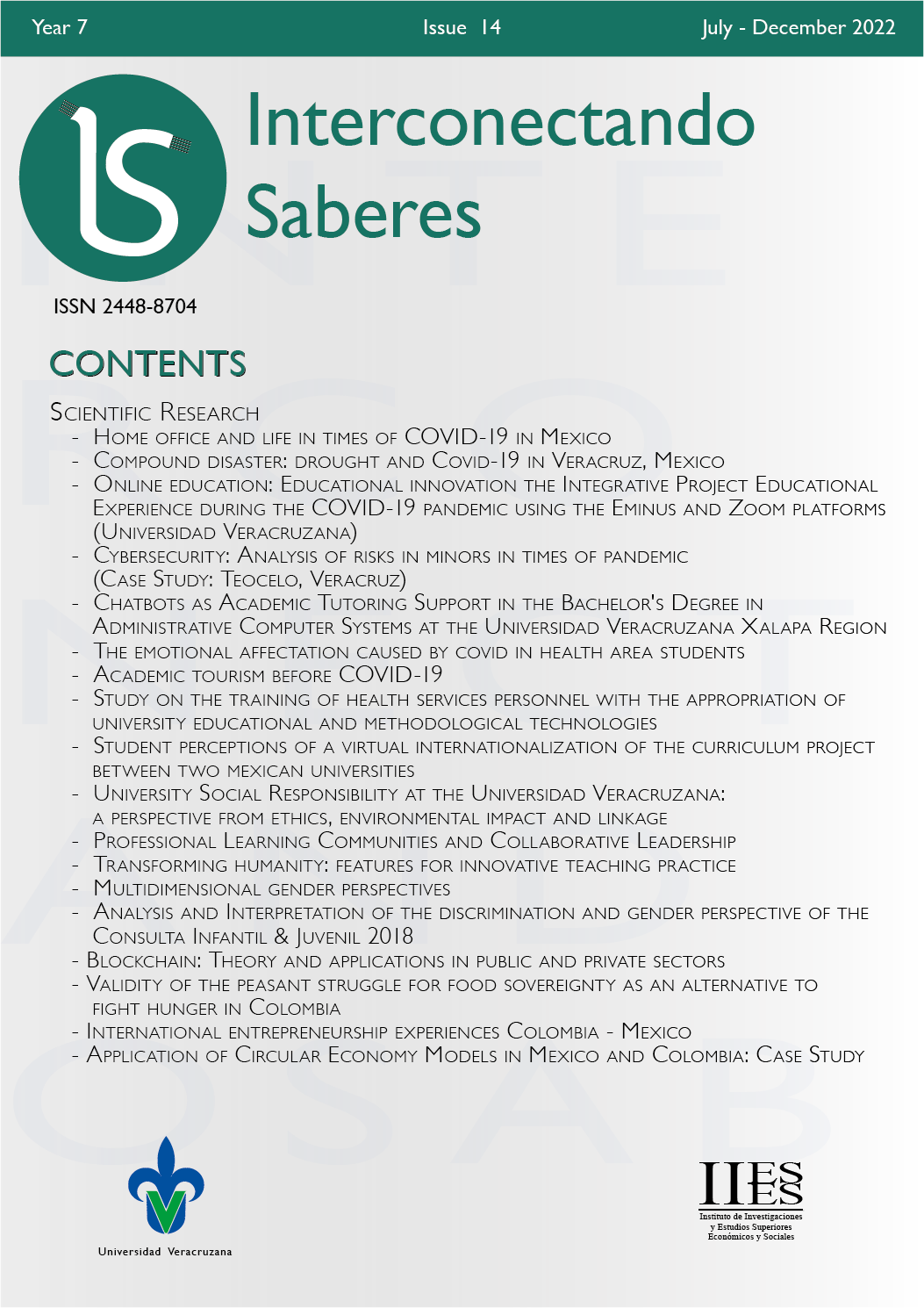Abstract
In recent years, the term cybersecurity has become increasingly important due to the rapid evolution of Information and Communication Technologies (ICT), also known as the growing technological dependence, making the network infrastructure of companies and schools more vulnerable. Also, for a little more than 2 years, Mexico has suffered the effects of the SARS-CoV2 pandemic, which has also led to existing platforms being exploited even more. Adults, young people and children used mobile devices for many hours, migrating to a digital form of work and education. Therefore, the objective of this research focuses on analyzing the risks that underage students in the town of Teocelo are exposed to when using ICT.
References
Castells, M. (2022). Internet y la Sociedad Red. Tecnologiaedu, 13.
De la LLata Gomez, D. E., y Ibarra Lopez, A. M. (2010). Niños nativos digitales en la sociedad del conocimiento: acercamientos conceptuales a sus competencias. Razón y Palabra, 72.
Duque, y Valencia, F. J. (s.f). Ciberseguridad. Universidad Nacional de Colombia.
Escobar, N. (11 de Marzo de 2021). Qué es el grooming y cómo podemos proteger a los niños en Internet. Hipertextual. https://hipertextual.com/2015/05/que-es-el-grooming
Escuelas en Teocelo. (2022). Escuelas en Teocelo - Municipios de México. https://www.los-municipios.mx
Gutiérrez, A. L. (29 de junio de 2021). Acechan hackers a empresas de México. El Financiero. https://www.elfinanciero.com.mx/empresas/2021/06/29/acechan-hackers-a-empresas-mexico-concentra-el-34-de-ciberataques-de-al/
Herrera, H. H. (19 de febrero de 2022). Las redes sociales: una nueva herramienta de difusión. Reflexiones , 91(2). https://www.redalyc.org/pdf/729/72923962008.pdf
Instituto Nacional de Estadística y Geografía [INEGI]. (2022). Censo de Población y Vivienda, 2020. https://www.inegi.org.mx/
ISACA. (2022). ISACA Glosario de Terminos. https://www.isaca.org/resources/glossary
Juventud, I. M. (01 de septiembre de 2017).¿Conoces a las y los nativos digitales?. https://www.gob.mx/imjuve/articulos/conoces-a-las-y-los-nativos-digitales
Latam Business School. (s.f.). Ranking de paises de latinoamerica que sufren más ciberataques. Latam. https://latam.university/blog/ranking-de-paises-de-latinoamerica-que-sufren-mas-ciberataques/
Lopez, M. C., y Muller, B. (2019). Bullying, ciberbullying, grooming y sexting: guía de prevención. Ituazingo : Maipue.
México, G. d. (2017). Estrategia Nacional de Ciberseguridad. https://www.gob.mx/cms/uploads/attachment/file/271884/Estrategia_Nacional_Ciberseguridad.pdf
Olmos, F. G. (22 de Junio de 2021). Tras la pandemia la digitalización creció un 80%. EXPANSION. https://expansion.mx/tecnologia/2021/06/22/tras-la-pandemia-la-digitalizacion-crecio-un-80
Pérez Gómez, Á. I. (2013). Educarse en la era digital:la escuela educativa. Madrid,Spain: Ediciones Morata,S.L.
Real Académia Española. (2020). Diccionario panhispánico del español jurídico. https://dpej.rae.es/lema/red-social
Real Académia Española. (2021). Diccionario de la lengua española: Internet. https://dle.rae.es/internet
Saenz, I. B. (2020). Accesibilidad y uso de Internet en México. La ENDUTIH a la luz de Covid-19. Visor ciudadano. 70.
Villén, J. C. (2011). Cyberbullying: prevalencia y caracteristicas de un nuevo tipo de bullying indirecto. Córdoba.
YouTube. (2021). Política de seguridad infantil [video]. https://support.google.com/youtube/answer/2801999?ref_topic=9282679

This work is licensed under a Creative Commons Attribution-NonCommercial-NoDerivatives 4.0 International License.
Copyright (c) 2022 Nancy Araceli Olivares Ruiz, Cecilia Esperanza Ostos Cruz, Elsa Suárez Jasso, Karen Daniela Pale Oropeza

